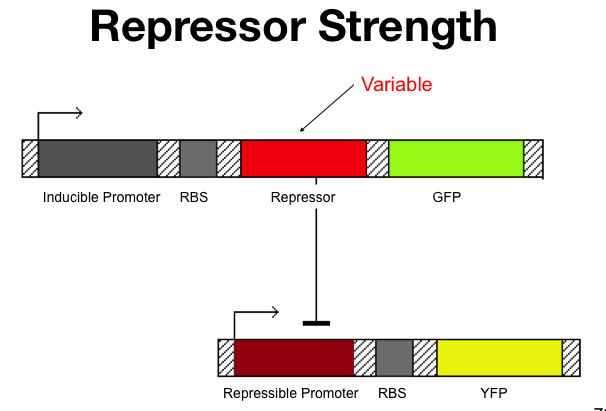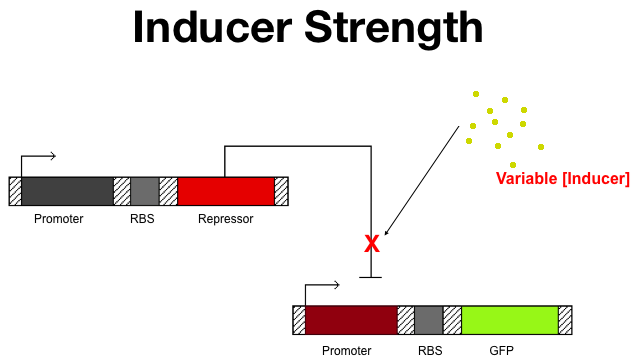|
Testing Constructs
There are two methods we could follow in designing the Switch. We could randomly try different RBSs, hope it works and if not try again without having much of an understanding of why our constructs didn't work work in the first place. Or we can test our repressors, promoters and inducers and have a systematic approach to anaylizing our system so that when something works or doesn't work we will know why. Thus, we have designed a few tests which should give us relative and absolute values of parameters in our system that we can then plug into the model.
We decided to test for three values. The combined transcription/translation rate of each repressor, the cooperativity of each repressor and the concentration of ligand needed to deactivate each repressor. We managed to design three tests all using the same constructs so as to minimize ligations. These tests should determine our variables independantly, i.e. changing synthesis rate should not change cooperativity of repression.
Synthesis Rate
The combined transcription/translation rate of the repressor is the combined strength of the promoter and the RBS. In  The Alpha test Architecture
The full testing construct will look like:
Constitutive Promoter>>RBS>>Repressor of Interest>>Term
Promoter of Interest>>RBS>>Reporter>>Term
The respective ligand would be added to the system at t=0, repressor would fall off the operator region and Reporter would start to be produced. We would measure this production rate and determine alpha.
Cooperativity of Repression
The cooperativity describes an inherent characteristic of a repressor's repression. In our system we want to know how  The Beta test Architecture
The full testing construct looks like:
Constitutive Promoter>>RBS>>LuxR>>Term
pLux>>RBS>>Repressor of Interest>>RBS>>Reporter1>>Term
Promoter of Interest>>RBS>>Reporter2>>Term
Initially the Repressor would be off and Reporter2 would be on. Then when AHL is added at varying concentrations, the repressor and Reporter1 are synthesized. Reporter1 concentration will increase linearly with Repressor so we will compare the Reporter1 vs. Reporter2, fit a curve the relation and determine to what power Reporter1 decreases, the beta value.
Ligand Concentration
Naturally, we don't want to add more ligand than we need. In what ever application the project might find, if we wanted to change the state again by adding a different  The Ligand test Architecture
|